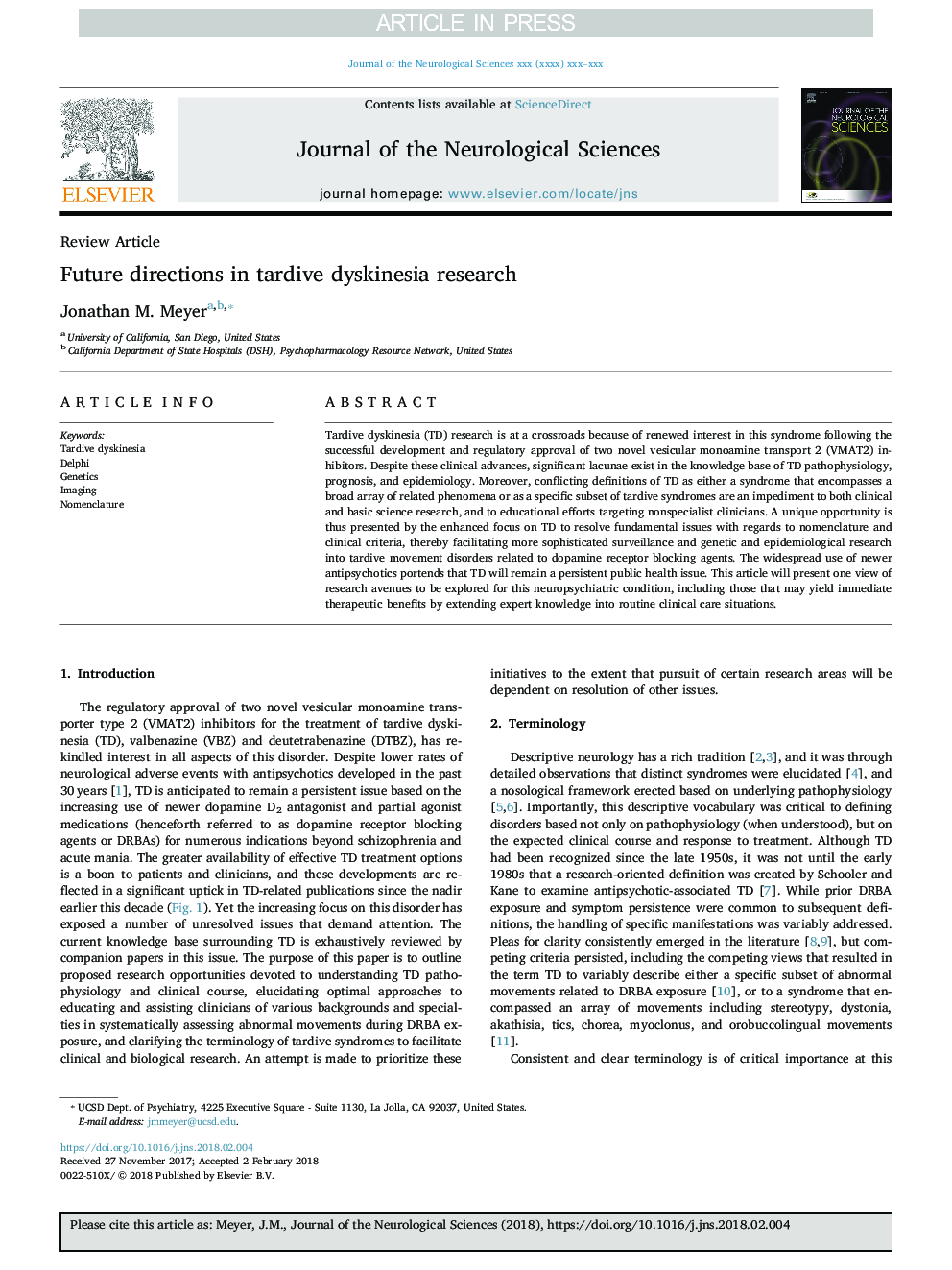| Article ID | Journal | Published Year | Pages | File Type |
|---|---|---|---|---|
| 8272551 | Journal of the Neurological Sciences | 2018 | 5 Pages |
Abstract
Tardive dyskinesia (TD) research is at a crossroads because of renewed interest in this syndrome following the successful development and regulatory approval of two novel vesicular monoamine transport 2 (VMAT2) inhibitors. Despite these clinical advances, significant lacunae exist in the knowledge base of TD pathophysiology, prognosis, and epidemiology. Moreover, conflicting definitions of TD as either a syndrome that encompasses a broad array of related phenomena or as a specific subset of tardive syndromes are an impediment to both clinical and basic science research, and to educational efforts targeting nonspecialist clinicians. A unique opportunity is thus presented by the enhanced focus on TD to resolve fundamental issues with regards to nomenclature and clinical criteria, thereby facilitating more sophisticated surveillance and genetic and epidemiological research into tardive movement disorders related to dopamine receptor blocking agents. The widespread use of newer antipsychotics portends that TD will remain a persistent public health issue. This article will present one view of research avenues to be explored for this neuropsychiatric condition, including those that may yield immediate therapeutic benefits by extending expert knowledge into routine clinical care situations.
Related Topics
Life Sciences
Biochemistry, Genetics and Molecular Biology
Ageing
Authors
Jonathan M. Meyer,
